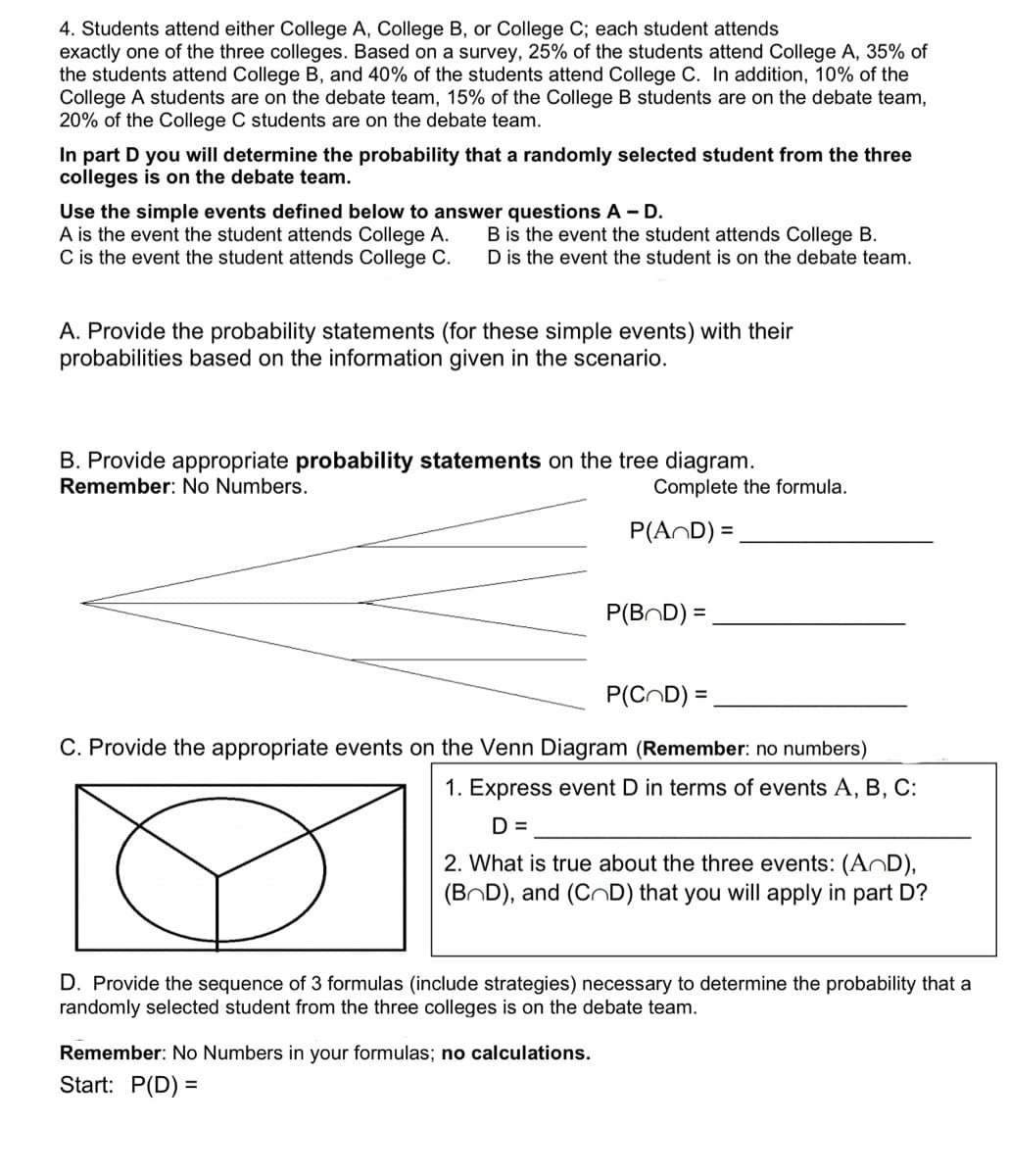exactly one of the three colleges. Based on a survey, 25% of the students atte the students attend College B, and 40% of the students attend College C. In College A students are on the debate team, 15% of the College B students ar 20% of the College C students are on the debate team. In part D you will determine the probability that a randomly selected stu
exactly one of the three colleges. Based on a survey, 25% of the students atte the students attend College B, and 40% of the students attend College C. In College A students are on the debate team, 15% of the College B students ar 20% of the College C students are on the debate team. In part D you will determine the probability that a randomly selected stu
Algebra and Trigonometry (MindTap Course List)
4th Edition
ISBN:9781305071742
Author:James Stewart, Lothar Redlin, Saleem Watson
Publisher:James Stewart, Lothar Redlin, Saleem Watson
Chapter14: Counting And Probability
Section14.1: Counting
Problem 84E
Related questions
Question
4.

Transcribed Image Text:4. Students attend either College A, College B, or College C; each student attends
exactly one of the three colleges. Based on a survey, 25% of the students attend College A, 35% of
the students attend College B, and 40% of the students attend College C. In addition, 10% of the
College A students are on the debate team, 15% of the College B students are on the debate team,
20% of the College C students are on the debate team.
In part D you will determine the probability that a randomly selected student from the three
colleges is on the debate team.
Use the simple events defined below to answer questions A - D.
A is the event the student attends College A.
C is the event the student attends College C.
B is the event the student attends College B.
D is the event the student is on the debate team.
A. Provide the probability statements (for these simple events) with their
probabilities based on the information given in the scenario.
B. Provide appropriate probability statements on the tree diagram.
Remember: No Numbers.
Complete the formula.
P(AND) =
P(BOD) =
P(COD) =
C. Provide the appropriate events on the Venn Diagram (Remember: no numbers)
1. Express event D in terms of events A, B, C:
D =
Remember: No Numbers in your formulas; no calculations.
Start: P(D) =
2. What is true about the three events: (AnD),
(BOD), and (CD) that you will apply in part D?
D. Provide the sequence of 3 formulas (include strategies) necessary to determine the probability that a
randomly selected student from the three colleges is on the debate team.
Expert Solution
This question has been solved!
Explore an expertly crafted, step-by-step solution for a thorough understanding of key concepts.
Step by step
Solved in 3 steps with 3 images

Recommended textbooks for you

Algebra and Trigonometry (MindTap Course List)
Algebra
ISBN:
9781305071742
Author:
James Stewart, Lothar Redlin, Saleem Watson
Publisher:
Cengage Learning

Algebra and Trigonometry (MindTap Course List)
Algebra
ISBN:
9781305071742
Author:
James Stewart, Lothar Redlin, Saleem Watson
Publisher:
Cengage Learning